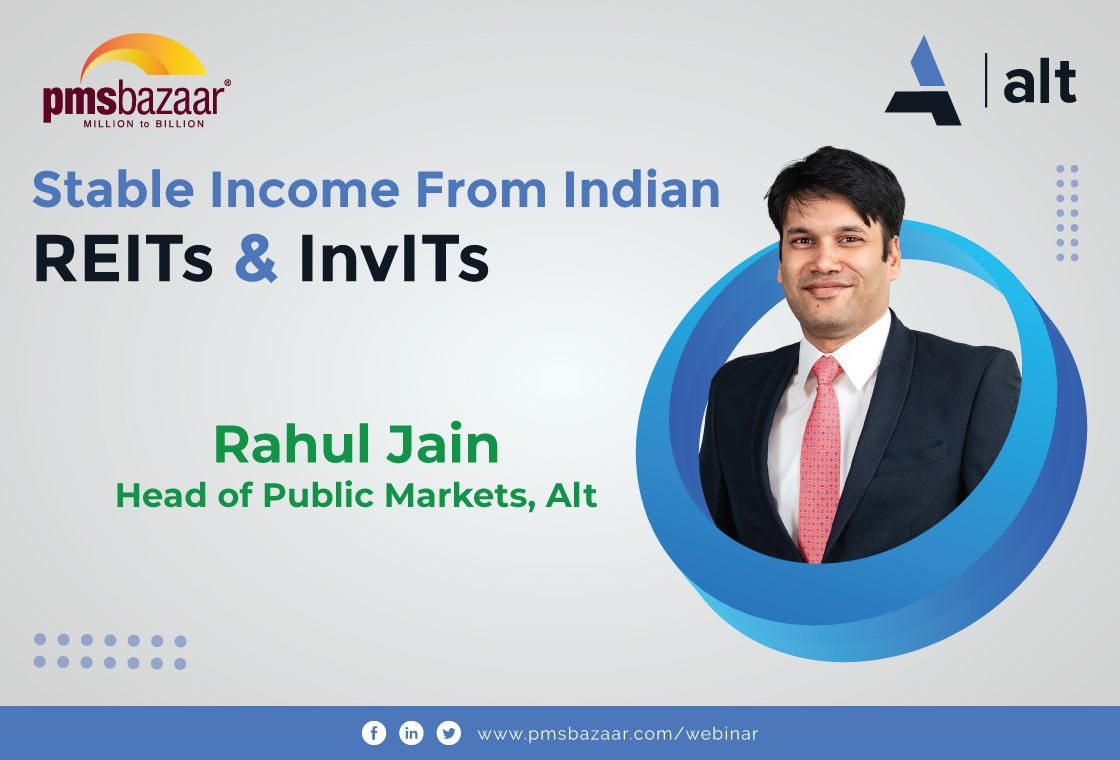PMS investment approaches invest across stocks, bonds and a mix of both for balanced risk and return. Portfolio managers offer a balanced mix between equity and debt based on investors' risk tolerance. Read more to understand where PMSes invest.

Portfolio Management Services (PMS) are investment products designed for high-net-worth individuals (HNIs) and ultra-high-net-worth individuals (UHNIs). These services offer customised investment strategies based on factors like the investor's risk tolerance and desired asset allocation.
While equity is a common focus, PMS can also incorporate debt instruments and provides flexibility in accessing equities through listed stocks, mutual funds, and even unlisted equity (with limitations).
Let’s look at where PMS invest one by one, starting with equity.
Equity PMS
Equity PMS can invest across various market capitalisations, including large cap, mid cap, small cap, multi-cap, and flexi cap stocks. Additionally, other categories such as small & mid-cap, large & mid-cap – where some PMSes combine small and mid-cap or large-cap stocks for a balance between potential growth and risk reduction.
- Investing styles: Beyond market cap
Beyond market capitalisation, equity PMS services delve deeper into specific investment strategies. Even within a chosen market cap range (large, mid, small, etc.), portfolio managers can have preferences for stocks with certain characteristics. For instance, a value investing strategy would focus on identifying fundamentally strong companies whose stock prices are currently undervalued by the market. This approach offers the potential for significant gains when the market corrects and recognizes the true value of these companies.
Equity PMS goes beyond just picking stocks based on market size. Portfolio managers employ various investment strategies to build your portfolio. Here are some popular approaches:
Value Investing: This strategy, championed by Warren Buffett, focuses on undervalued companies with strong fundamentals. The idea is to buy stocks the market has priced too low, and profit when their true value is recognized.
Growth Investing: This approach targets companies experiencing rapid growth, often in emerging industries. These companies may be overvalued based on current earnings, but their future potential justifies the premium. It is essentially the opposite of value investing.
Momentum Investing: Unlike growth investing, which considers a company's underlying business, momentum investing focuses solely on stock price trends. The strategy involves buying stocks that are rising and selling when they lose momentum. This approach requires frequent trading, making it less tax-efficient.
These are just a few of the most common strategies. PMS services may also incorporate less popular factors like quality and low volatility.
Thematic Investing: This strategy focuses on a particular industry or sector, such as Information Technology (IT) or Banking, Financial Services and Insurance (BFSI). While it offers the potential for high gains, it is also riskier. Entire sectors can fall out of favour for extended periods, leading to significant losses. For example, the NIFTY IT Index significantly underperformed the broader market in the past year. Thematic investing is best suited for investors with strong conviction in a specific sector's future performance.
Debt PMS
Portfolio managers can construct a portfolio solely based on different debt instruments and their maturities for higher returns. These strategies focus on fixed-income instruments like debt mutual funds, debentures, commercial papers and corporate bonds among others. Portfolio managers can employ a hold-to-maturity strategy or make active decisions based on interest rate fluctuations.
Hybrid PMS
In simple terms, by combining equity and debt securities hybrid PMS aims to create diversified portfolios with varying risk levels depending on the chosen asset allocation and rebalancing strategy (if any).
Multi-Asset PMS
This option offers the most diversification. It incorporates not only traditional equity and debt, but also alternative assets like gold, silver, Mutual Funds, Real Estate Investment Trusts (REITs), and Infrastructure Investment Trusts (InvITs). The risk profile of multi-asset PMS can vary significantly depending on the specific asset allocation and investment strategy employed.
Benchmarks
Keep in mind that as per SEBI regulations, all PMS investment approaches must adhere to investment guidelines and follow specific benchmarks. For instance, all equity PMSes are mandated to have the BSE 500, Nifty 50 or MSEI SX 40 indices as benchmarks. Similarly, debt PMSes are required to have any one of the - Crisil Composite Bond Fund Index, Crisil Credit Index or Nifty Medium to Long Duration Debt Index, as a benchmark.
For Hybrid PMS, the AMCs can adopt anyone one as a benchmark – the Nifty 50 Hybrid Composite Debt 50:50 Index, BSE S&P Hybrid or Crisil Hybrid 50+50 Moderate Index, and lastly, with multi-asset PMS, either NSE Multi Asset Index 1 or NSE Multi Asset Index 2 can be considered as benchmarks.
Takeaway
Before diving into the world of PMS investments, it is crucial to consider several key parameters. Understanding where a PMS invests - be it by market capitalisation, investment style, or asset class - sheds light on the types of investments and inherent risks involved. This knowledge empowers you to make informed decisions that align with your risk tolerance and wealth creation strategy.
Recent Blogs

Long-Only AIFs Rebound Sharply in October; Long-Short Strategies Lag Despite Lower Volatility
106 long-only AIFs averaged 3.68% vs 32 long-short AIFs at 2.7%; only 24–31% of funds beat key indices

Markets log strongest monthly gains in 7 months; PMS performance turns near-uniform in October
Nifty 50 TRI gained 4.62%, BSE 500 TRI rose 4.27%; 415 of 427 equity PMSes ended positive

How SMEs are Shaping India’s Investment Landscape?
PMS Bazaar recently organized a webinar titled “How SMEs are Shaping India’s Investment Landscape?” which featured Mr. Shrikant Goyal, Fund Manager, GetFive Opportunity Fund.

Stable Income from Indian REITs and InvITs
PMS Bazaar recently organized a webinar titled “Stable Income from Indian REITs and InvITs,” which featured Mr. Rahul Jain, Head of Public Markets, Alt.

5 Key Considerations Before Investing in AIFs in India
Alternative Investment Funds (AIFs) have emerged as a compelling option for sophisticated investors seeking diversification and potentially superior returns. But venturing into AIFs requires a clear understanding of their unique characteristics that go beyond simply knowing what they are and their categories.

How AIF can help in diversification?
Traditionally, Indian investors have relied on a mix of stocks and bonds to build their wealth. While this approach offers diversification, it can still leave your portfolio vulnerable to market fluctuations. Enter Alternative Investment Funds (AIFs), a dynamic asset class gaining traction for its ability to unlock diversification beyond the realm of conventional options.

Long-Short AIFs Outperform Again Even as Markets Rebound in September
104 long-only funds shows an average monthly gain of just 0.37 per cent, while long-short AIF category averaged 0.94 per cent

Resilience returns as markets rebound in September; Multi-asset PMSes lead pack
Over 63% of equity PMSes ended September in green; nearly two-thirds outperformed key benchmarks.

